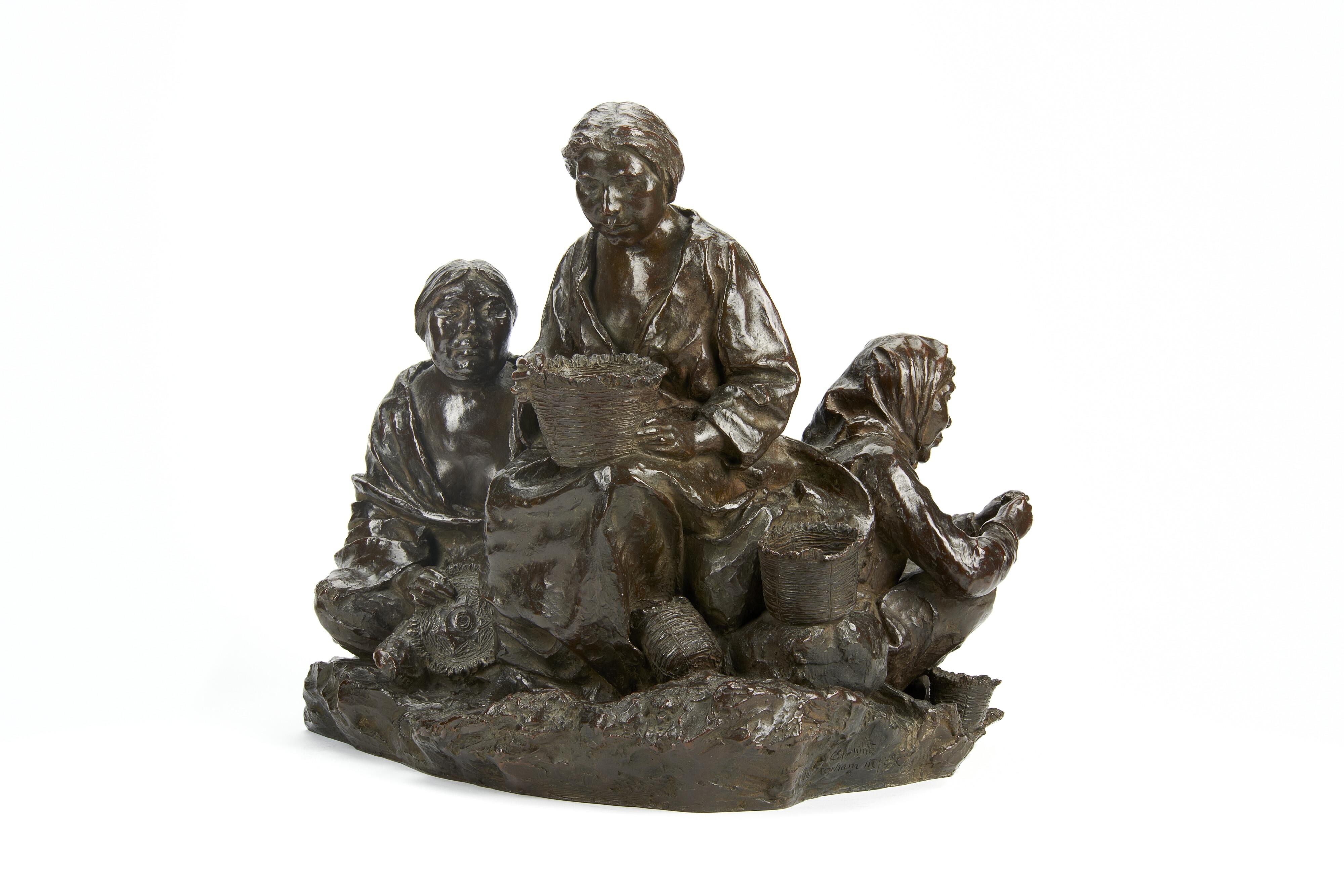Basket Weavers / Louis Potter, 1873 - 1912 (Artist)
Gallery Label
The women depicted in this work were members of the Tlingit tribe whom Potter sculpted on his 1904 trip to Alaska. In 1905, Gorham bought the rights of reproduction for this work and 17 other sculptures made on that trip. Although marked by the Gorham foundry, the bronze interior shows all indications of an Italian-style lost-wax cast—white investment residue and drips and bubbles from the molten wax now preserved in bronze. This complex work of three figures appears to be cast in one piece and is a tour de force of bronze casting. Documentation exists that Gorham subcontracted lost-wax casting as early as 1905 to the Roman Bronze Works. It is likely that Gorham recognized this complex surface could be more economically cast by lost wax and could have been an impetus to establish its own short-lived lost-wax facility in 1906.
From the exhibition:Frontier to Foundry: the Making of Small Bronze Sculpture in the Gilcrease Collection, December 2014 - March 2015.
Ann Boulton Young, Associate Conservator for the Gilcrease Museum, 2014.
From the exhibition:Frontier to Foundry: the Making of Small Bronze Sculpture in the Gilcrease Collection, December 2014 - March 2015.
Ann Boulton Young, Associate Conservator for the Gilcrease Museum, 2014.



